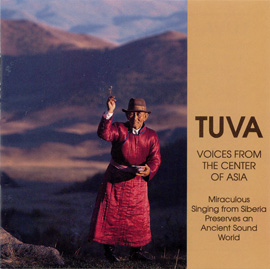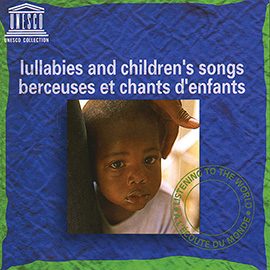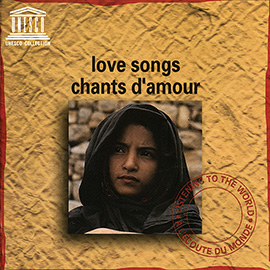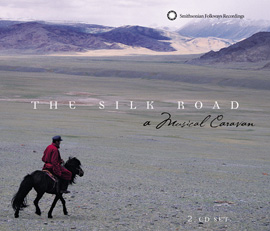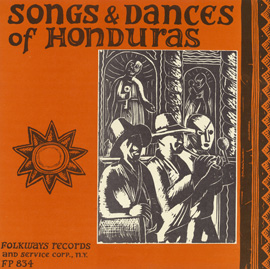Summary
An introductory course exploring “throat singing” (or overtone singing) as practiced and performed by the people of Tuva. We will explore this truly unique style of vocal production through attentive listening, watching video and practicing techniques and types of throat singing.
Suggested Grade Levels: 9-12
Country: Mongolia
Region: Tuva (The Steppes of Mongolia)
Culture Group: Tuva
Genre: Traditional Folk Songs
Instruments: voice
Language: Tuvan
Co-Curricular Areas: Asian Geography (Asia)
National Standards: 1, 2, 3, 4, 5
Prerequisites:
- Some basic experience singing and pitch matching
- Willingness to make unfamiliar vocal sounds in a group
Objectives:
- Learn and explore the techniques of throat/overtone singing
- Learning to distinguish the three general types of throat singing in the Tuvan tradition (Khoomei, Sigit, Kargiraa)
- Learn about this music and singing style in its geographical and cultural context
- Learn and practice basic skills and techniques for overtone singing
- Performance in a Community Meeting (public setting)
Material:
- Smithsonian Folkways Recordings:
- Liner Notes for “Voice from the Center of Asia” downloadable here
- Smithsonian Folkways Soundscapes article and videos

“Khoomei”
from Tuva: Voices from the Center of Asia (1990) | SFW40017
“Sigit”
“Kargiraa "Artii-Sayir"”
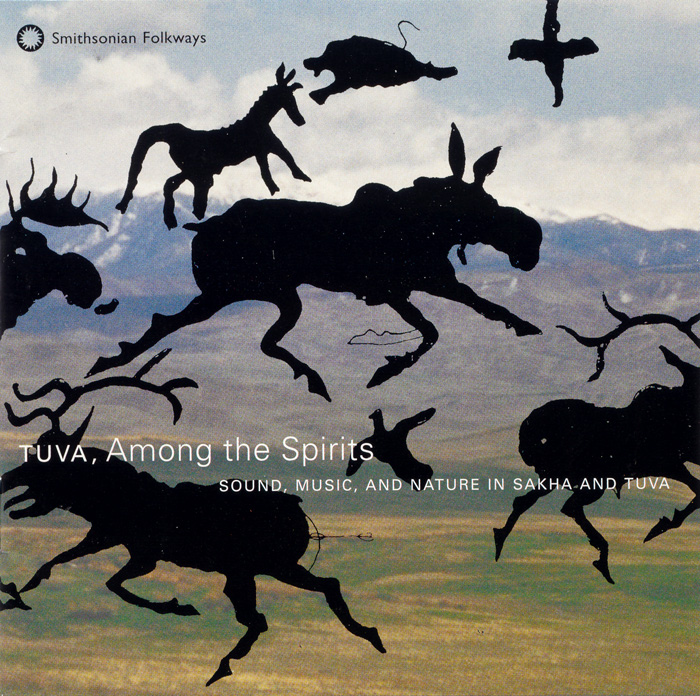
“A Reverberant Valley”
Tuva, Among the Spirits: Sound, Music, and Nature in Sakha and Tuva (1998) | SFW40452
1. Listening and Distinguishing
- Watch video of N. Sengedorj of Mongolia as he demonstrates Khöömei - the Tuvan word for throat-singing in general, as well as one of the distinct types of this art form.
- Ask these related questions:
- What do you hear? (a high whistling, a man singing)
- How many sounds are being produced? (At least 2)
- Does anybody know what that higher sound is called? (a harmonic or overtone)
- Discuss briefly terms like fundamental tone, harmonics, and overtones, etc. (See page 3 of the Liner Notes in the Folkways album TUVA - Voices of Central Asia for a good explanation of these sonic phenomena.)
- Ask: ‘What do you see?’ on the video recording. (Make some general observations about how the singer appears to be producing these sounds. Notice mouth and lip positions, etc.)
2. Guide students to a discovery of appropriate posture and breath in Tuvan singing.
- Have students sit on chairs, in a circle.
- Discuss and work with the importance of posture for good breath control and vocal production; emphasize the fact that throat singing, in particular, will require building up the ability to sustain a pitch for an extended duration. This requires practice and regular exercise.
- Practice breathing exercises - sustained “S”
- Apply breath control work to sustained pitch, etc.
- Sing on 3 key vowels : oo (boot), ah (bought), ee (beet)
3. Reading for Understanding (in class or at home)
- Have students spend a few minutes reading the Smithsonian Folkways “Soundscape” article about some of the cultures that practice this remarkable approach to vocalization
4. Some Cultural Orientation Lessons
- Short lecture/introduction to Mongolia, the steppes of Central Asia and the people of Tuva. Direct students to the following items:
- location of Tuva (map provided below)
- pictures of Central Asian steppe
- pictures of yurts (traditional dwellings in Mongolia)
- horses in the Tuvan culture

- Introduce the terms: Khöömei, Kargiraa, Sigit the three central styles of Tuvan throat singing. Liner notes in TUVA: Voices from the Center of Asia is an excellent introduction to these terms and the characteristics of these styles. (Take note of possible variations in the spelling of these terms...e.g. sygit)
- Watch video of Mark van Tongeren
- Short discussion of this video and the techniques demonstrated...
- Lead students in a short practical experience, by imitating some of the suggestions that Mr. Tongeren demonstrates on the video recording. (Remind the students to practice good posture and breath as we worked on in segment 2 above.)
- Work on Vowel Triad technique, listening for the overtones.
oo - oh - ah
ah - ay - ee
ee - iih - oo - Lead students in an active listening experience (20 min), introducing them to the Kargiraa style of Tuvan throat singing on track 18 - TUVA: Voices of Central Asia (Notation is provided below for the sample.)
- Listen to the sample one or two times; then discuss what can be heard
- Notice the quality of the low sound, of the high sound
- Ask ‘What is the fundamental pitch being sung? (Find it on a piano.)
- Sing the “harmonic” melody in regular voices to learn the pitches
- Begin exploring the production of the Kargiraa sound by starting with “vocal fry” sound, going back and forth between an “ah” vowel sound and “vocal fry”.

(CITATION: Liner Notes from TUVA: Voices from the Center of Asia)
5. Deepening the Practice of Throat Singing
- Warming up (review of Lesson Segment 2)
- Check posture
- sit up, sternum slightly lifted, shoulder blades comfortably back and down
- Review and practice good breathing
- At a moderate tempo, *breathe* 4 short, rhythmic bursts of air exhaled on “S”, *breathe* then sustain for the count of 4.
- Repeat multiple times at different volume levels.
- After several times stop and make observations about the physical/muscle experience of pulsing and sustaining air.
- Do the same exercise, but now on the vowel-sound closed “E” (as in beet)
- Continue this exercise by going through the vowel-sounds: E (beet), AY (bait), AH (bought), O (boat), OO (boot)
- Remind the students about the importance of building up good breath control and tonal support for throat singing.
- Active Listening: Listen to the three samples of Khoomei, Sigit, and Kargiraa.
- SAMPLES: from TUVA: Voices from the Center of Asia Practice
- Khoomei - track 5
- Sigit - track 2
- Kargiraa - track 18
- Have a discussion about similarities and differences between these styles. (Reference the liner notes for clarification and distinctions.)
6. Practicing Throat Singing Through Listening and Imitation
Note: From this point forward the lessons should focus on practice. Emphasize to the students that listening to the samples and imitating the sounds they hear through experimentation is a key method to reaching the goal of producing these unique vocal sounds.
- Suggestions for discovering the Kargiraa style of singing:
- Start with a solid fundamental tone in mid-to-low register
- (C below middle C works well for young men whose voices have changed. Middle C works well for young women and boys whose voices have not changed.)
- Have all students sing on a unison pitch following these cues:
- *Big Breath*
- Relax the jaw and the back of the throat.
- Sustain pitch on the vowel “ah”.
- Begin switching in and out of tone and “vocal fry”.
- Emphasize that this should not hurt! It should just buzz in the throat comfortably.
- Sustain “vocal fry” alone.
- Begin adding the sound “ir” as in the word “girl” to the sustained “vocal fry”.
- Building on this “vocal fry” sound, sing the following words on a sustained mid-range pitch:
- Girl-Bird-World-Mural-Laurel- etc.
- Elongate and emphasize the “r” and “l”
7. Once you’ve got the basic throaty sound working, start listing for and working on highlighting the overtone sound. Review this by going back to video sample of Mark van Tongeren in the Cultural Orientation Lessons above.
8. Go back to listening to track 18 (Kargiraa "Artii-Sayir") from TUVA: Voices of Central Asia, and then practice finding the overtones above the fundamental tone. (Adjust the fundamental pitch up or downward according to need and vocal ranges.)



